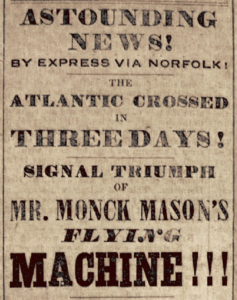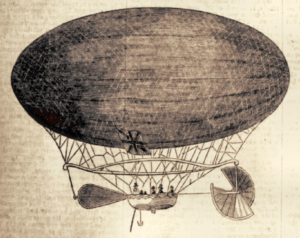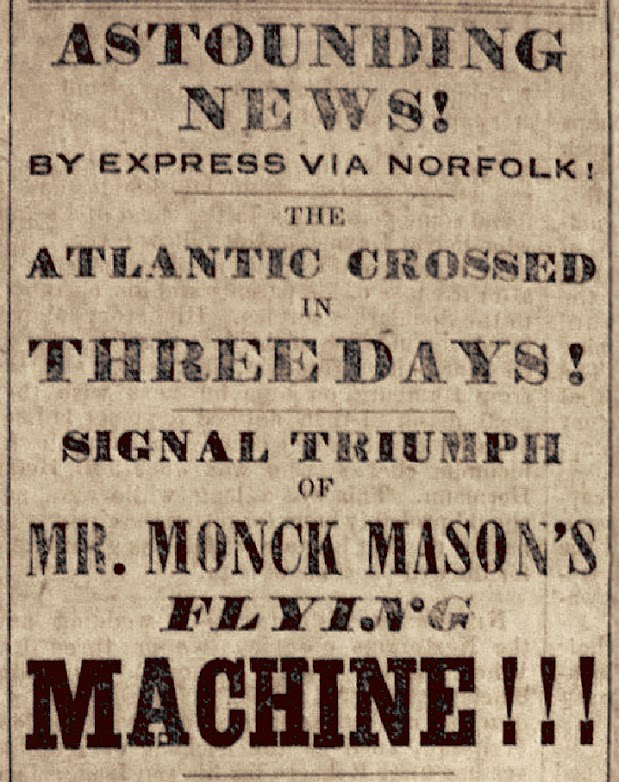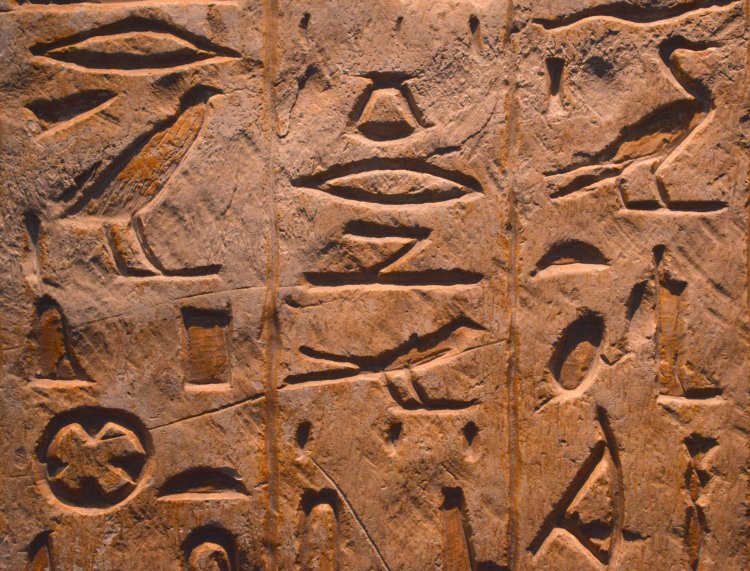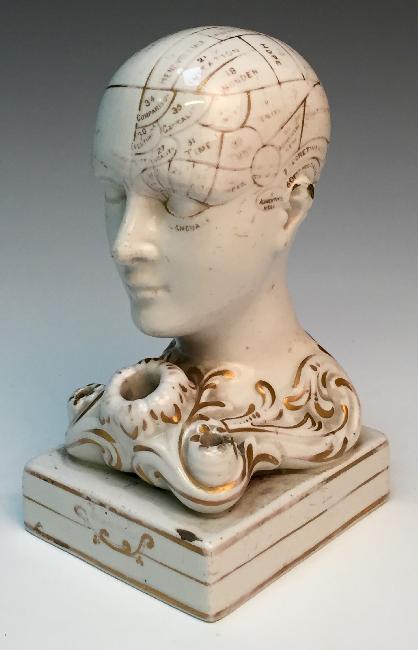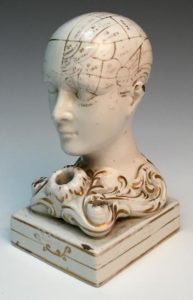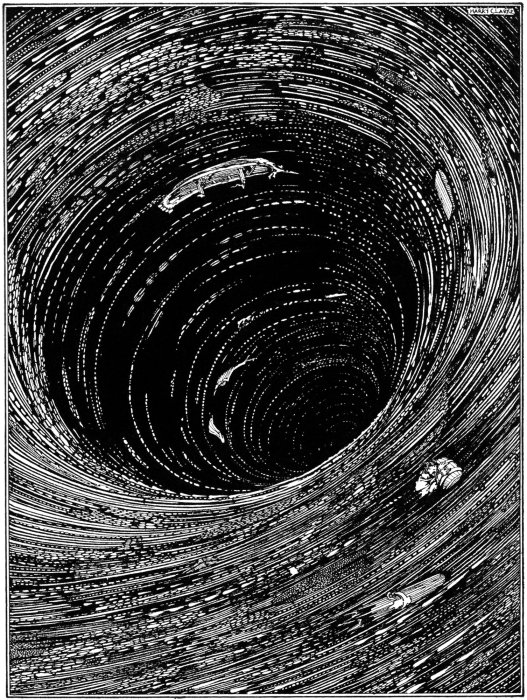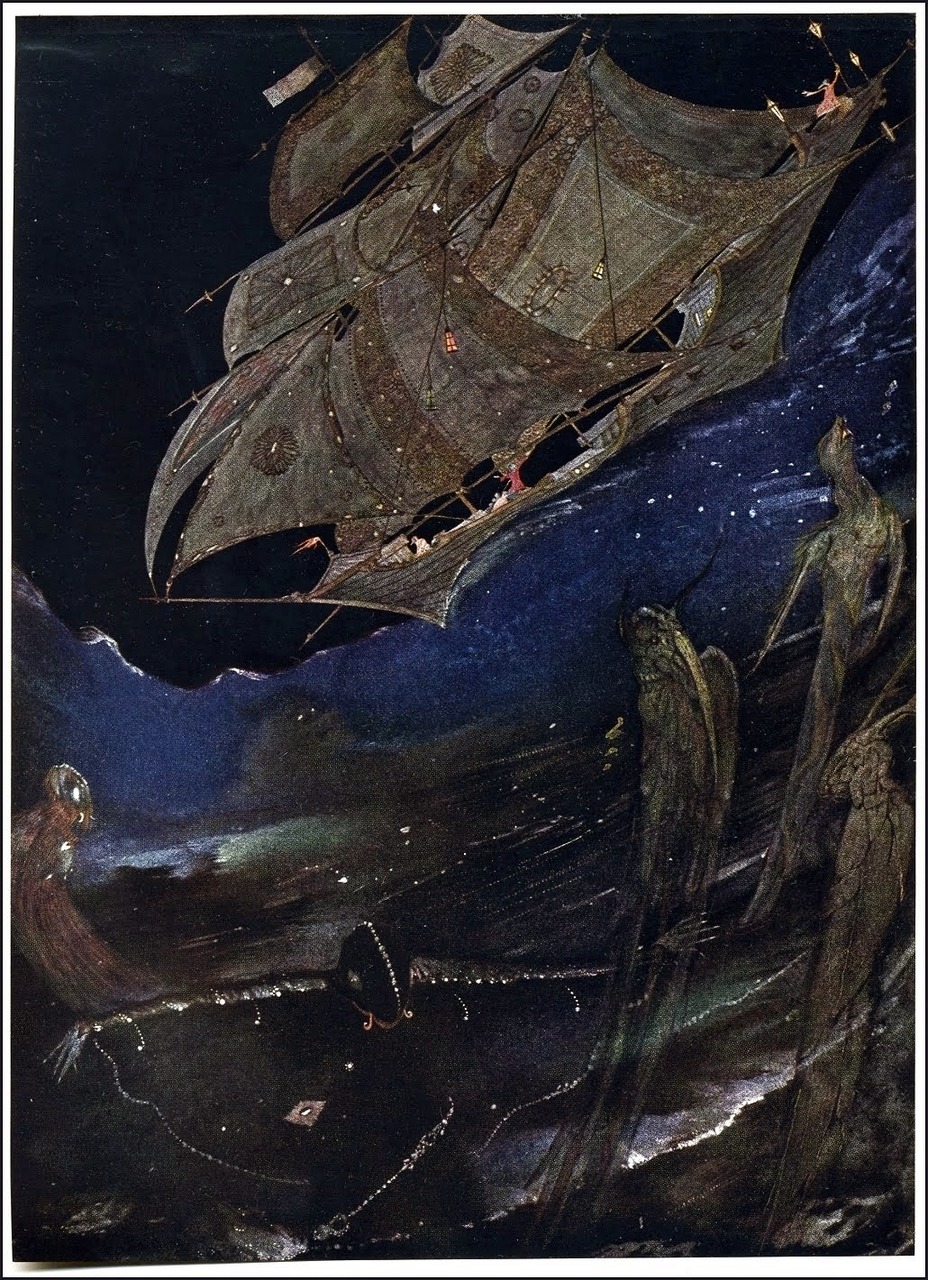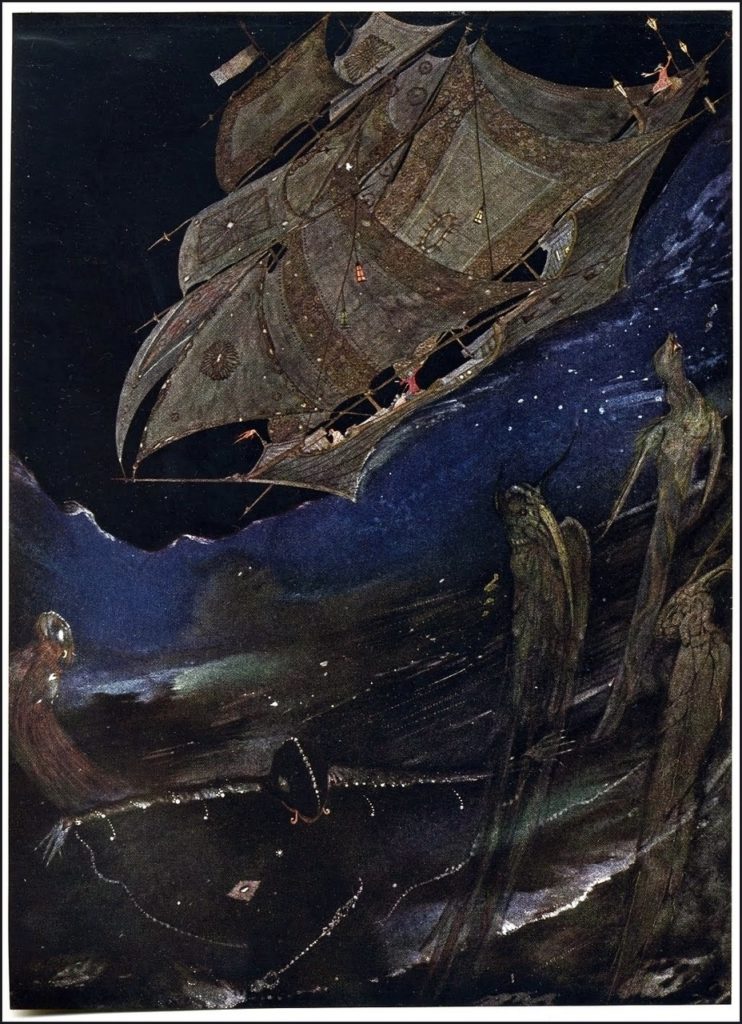Poe was notorious for being a harsh critic-he was nicknamed the “Tomahawk Man,” after all. But are you familiar with these particular criticisms?
Check these out:
1) Poe once told a guy to shoot himself. According to Poe scholar Chris Semtner in his book Edgar Allan Poe’s Richmond, Poe wrote a review of author Langston Osbourne’s book, Confessions of a Poet in an 1835 issue of the Southern Literary Messenger. First off, let us explain that the author had included a couple of sentences in his preface explaining that he’d had a gun on standby so he could shoot himself upon the book’s completion. Poe, knowing this, stated,
The author avers upon his word of honor that in commencing this work he loads a pistol, and places it upon the table. He farther states that, upon coming to a conclusion, it is his intention to blow out what he supposes to be his brains. Now this is excellent. But, even with so rapid a writer as the poet must undoubtedly be, there would be some little difficulty in completing the book under thirty days or thereabouts. The best of powder is apt to sustain injury by lying so long “in the load.” We sincerely hope the gentleman took the precaution to examine his priming before attempting the rash act. A flash in the pan — and in such a case — were a thing to be lamented. Indeed there would be no answering for the consequences. We might even have a second series of the Confessions.
Yikes!
2) In an introductory article for The Lady’s Book, entitled “The Literati: Of Criticism-Public and Private,” Poe proceeded to explain the premise of a series of articles he would be releasing. He then commenced, giving us a glimpse to prepare us for the potentially scathing reviews to follow:
Again, of Mr. Longfellow, who, although a little quacky per se, has, through his social and literary position as a man of property and a professor at Harvard, a whole legion of active quacks at his control-of him what is the apparent popular opinion? Of course, that he is a poetical phenomenon, as entirely without fault, as is the luxurious paper upon which his poems are invariably borne to the public eye (40-41).
Not only does Poe call Longfellow a “quack,” a pretty bold move to make, but he also sarcastically implies that Longfellow does entirely have faults, is not a poetical phenomenon, and he mocks the “luxurious paper upon which [Longfellow’s] poems are” written on. Keep in mind that this wasn’t the beginning, nor was it the end, of the “Poe-Longfellow War.” We will allude to this again later in this post.
3) Aside from literary critiques, Poe also went the mile and decided to critique include physical appearances and attributes at the end of some articles. Here’s one of our favorites regarding Margaret Fuller’s appearance in Poe’s eyes:
She is of the medium height; nothing remarkable about the figure; a profusion of lustrous light hair; eyes a bluish gray, full of fire; capacious forehead; the mouth when in repose indicates profound sensibility…but the upper lip, as if impelled by the action of involuntary muscles, habitually uplifts itself, conveying the impression of a sneer” (122).
How flattering.
4) Charles Fenno Hoffman was a common name back in Poe’s time. Hoffman was especially, personally known to Poe through a harsh published review of “Eureka” in The Literary World, for which Hoffman was the editor. Although it may have seemed to Poe that Hoffman was unfair to publish this review of Poe’s allegedly great masterpiece, we feel he had every right to his actions as editor, especially considering what Poe wrote regarding one of Hoffman’s own works, Greyslaer,
“Greyslaer” followed, a romance based on the well known murder of Sharp, the Solicitor-General of Kentucky, by Beauchampe[sic]. W[illam] Gilmore Simms, (who has far more power, more passion, more movement, more skill than Mr. Hoffman) has treated the same subject more effectively in his novel “Beauchampe,” but the fact is that both gentlemen have positively failed, as might have been expected (173)
Poe has effectively disrespected both Hoffman and Simms in a few short lines, making this a double-whammy critique. And, apparently Poe felt the need to mention in a review about Hoffman that even though Hoffman and Simms failed to provide a good novel, Hoffman failed harder than Simms. We say this statement was completely uncalled for.
5) In our same book of Poe criticisms, we found a curious man by the name of William W. Lord. Poe didn’t know who he was either, as his article opens by explaining, “Of Mr. Lord we known nothing-although we believe that he is a student at Princeton College-or perhaps a graduate, or perhaps a Professor of that institution.” (256). This anonymity seems to pull the worst out in Poe, perhaps because if he isn’t acquainted with them, he’ll never see the victim.
A curious passage arises in this critique, as he quotes the following lines from a poem of Lord’s, “And the aged beldames napping,/ Dreamed of gently rapping, rapping, / With a hammer gently tapping, / Tapping on an infant’s skull” (266). Poe goes on to imply that this is a theft of his “The Raven,” as he provides the following stanza for example, “While I pondered nearly napping, / Suddenly there came a rapping, / As of someone gently tapping, / Tapping at my chamber door” (266). He then attacks,
But it is folly to pursue these thefts. As to any property of our own, Mr. Lord is very cordially welcome to whatever use he can make of it. But others may not be so pacifically disposed, and the book before us might be very materially thinned and reduced in cost, by discarding from it all that belongs to Miss Barrett, Tennyson, Keats, Shelley, Proctor, Longfellow and Lowell-the very class of poets, by the way, whom Mr. William W. Lord, in his ‘New Castalia’ the most especially affects to satirize and to contemn (266).
This is how he ends his critique of Mr. Lord,
Invariably Mr. Lord writes didst did’st; couldst could’st, &c. The fact is he is absurdly ignorant of the commonest principles of grammar-and the only excuse we can make to our readers for annoying them with specifications in this respect is that, without the specifications we should never have been believed.
But enough of this folly. We are heartily tired of the book, and thoroughly disgusted with the impudence of the parties who have been aiding and abetting in thrusting it before the public. To the poet himself we have only to say-from any farther specimens of your stupidity, good Lord deliver us! (269).
As for Mr. Lord, whether he was a student or professor, we can guess he did not come out to see the light of day again after reading Poe’s article about him.
6) In regard to Rufus Griswold’s anthology, The Poets and Poetry of America, (you know, the man who attempted to destroy Poe’s reputation), Poe had this to say:
He has omitted from the body of his book, some one or two whom we should have been tempted to introduce. On the other hand, he has scarcely made us amends by introducing some one or two dozen whom we should have treated with contempt. We might complain too of a prepossession, evidently unperceived by himself, for the writers of New England. We might hint also, that in two or three cases, he has rendered himself liable to the charge of personal partiality…(103).
Perhaps he is referring to Charles Hoffman in this case, who had had 45 of his poems featured in the anthology. Poe even points this out in a separate, but relevant criticism and article about Hoffman,
Whatever may be the merits of Mr. Hoffman as a poet, it may be easily seen that these merits have been put in the worst possible light by the indiscriminate and lavish approbation bestowed on them by Dr. Griswold in his ‘Poets and Poetry of America.’ The editor can find no blemish in Mr. H., agrees with everything and copies everything said in his praise-worse than all, gives him more space in the book than any two, or perhaps three, of our poets combined (175).
In Griswold’s anthology, Poe only had three poems featured. Perhaps he was harboring ill feelings?
7) Lewis Gaylord Clark was known for being the editor of The Knickerbocker for many years, as well as another victim held under Poe’s scrutiny-we might also mention that Poe and Clark had quite a rocky relationship. Sometimes Edgar could be downright harsh to those he critiqued, and Gaylord wasn’t an exception, as seen in the following example, “Mr. Clark once did me the honor to review my poems, and-I forgive him…He is noticeable for nothing in the world except for the markedness by which he is noticeable for nothing” (Quinn 502). All we can say is that this critique didn’t go unnoticed by us in the least.
8) Many men did not go unobserved by Poe, and Charles F. Briggs was no exception. Briggs was Poe’s coworker at the Broadway Journal; in fact, Briggs was its founder. However, Poe remained merciless in his installment of “The Literati of New York City,” when he proclaimed that Briggs “has never composed in his life three consecutive sentences of grammatical English. He is grossly uneducated” (EAPoe).
9) Our ninth author sacrificed under the mercilessness of Poe is Joel T. Headley. This reverend, historian, and author was torn apart from first sentence to last under Poe’s evaluation. For example, Poe writes about Headley’s “Sacred Mountains,” stating,
We say that a book is a “funny” book, and nothing else, when it spreads over two hundred pages an amount of matter which could be conveniently presented in twenty of a magazine…that a book is a”funny” book, and nothing but a funny book, whenever it happens to be penned by Mr. Headley (47).
Sufficed it to say that Headley wasn’t going for a comical bent in his “Sacred Mountains.” We might also note that in this same editorial, Poe calls Headley a “quack”-does this sound familiar? (The author of this post would also like to note that she read the book that Poe grossly attacked and can say that she disagrees with Poe’s claims.)
10) Finally, Longfellow was, once more, analyzed under Poe’s seething Tomahawk gaze in an article titled “Mr. Longfellow and Other Plagiarists: A Discussion With ‘Outis’.” As you might recall, an intern at the museum wrote an article last summer about the Poe-Longfellow War, which you can check out here. That being said, we will not go too in depth into the ordeal. However, in this last section of our list, we will discuss this mysterious Outis mentioned in the title.
Have any of our readers heard of this mysterious Outis? Where did he come from, and what were his intentions? Whomever took the title of Outis was most likely trying to play a trick on Longfellow and other readers, we surmise, as it has even been speculated that this Outis was Poe himself.
Outis is Greek for “Nobody” or “No One,” which seems befitting if one were to take on a pseudonym. But why might Poe be this mysterious Outis? We will explain in a blog post soon to come. Meanwhile, we are left with the “Mr. Longfellow…” critique, which is more or less a battle against Longfellow and other plagiarists (just as the title suggests), as well as Poe’s battle against this other mysterious writer who took it upon himself to publish a letter in Longfellow’s defense, all the while mocking Poe. He or she even compares a poem, “The Bird of the Dream” (which, we cannot currently find any records of this ever having existed) to “The Raven.” The point is daft, regardless, as the two poems aren’t even comparable.
“Sweet bird from realms of light, oh! come again to-night, / Come to my window-perch upon my chair- / Come give me back again that deep impassioned strain
/ That tells me thou hast seen and loved my CLARE,” the last stanza quotes, as provided in Outis’ article (EAPoe). However, Outis continues by explaining that he dares not to charge Poe with plagiarism, but proceeds to provide fifteen points explaining what “identities” make this poem comparable to “The Bird of the Dream.”
How does Poe respond? “What I admire in this letter is the gentlemanly grace of its manner, and the chivalry which has prompted its composition. What I do not admire is all the rest. In especial, I do not admire the desperation of the effort to make out a case” (EAPoe).
Why did we choose this article for our last choice? Considering the potential that Outis might be Poe himself, it is comical. We are presented not only with Outis’ criticism of Poe’s works, but also Poe’s rebuttal to Outis. Essentially, Poe is rebuking himself! Perhaps Poe wanted an opponent worthy of himself, so he took up the challenge? Or, perhaps he invented Outis in the hopes that Longfellow would respond to his accusations? There is no denying that it takes someone with great confidence and a sense of humor to critique themselves.
Which was your favorite selection? Were there any critiques that didn’t make it in our list? Feel free to comment below!
